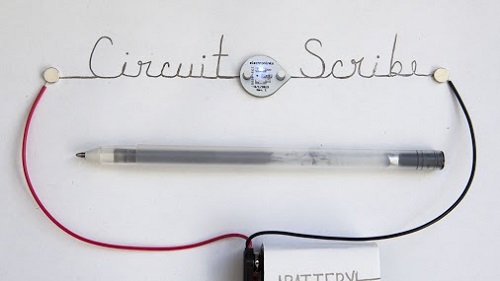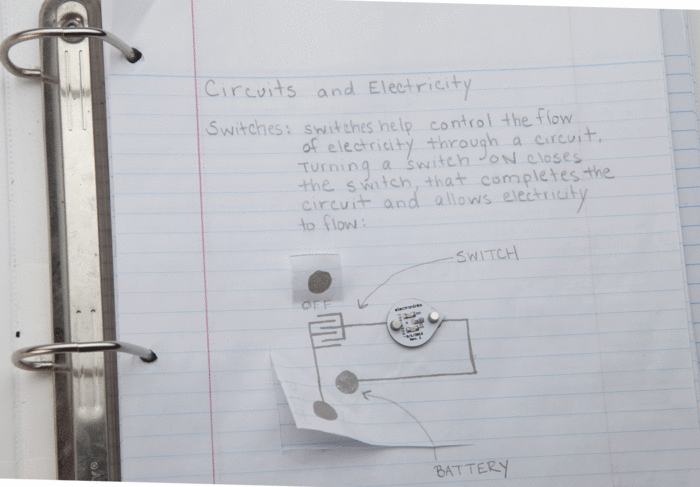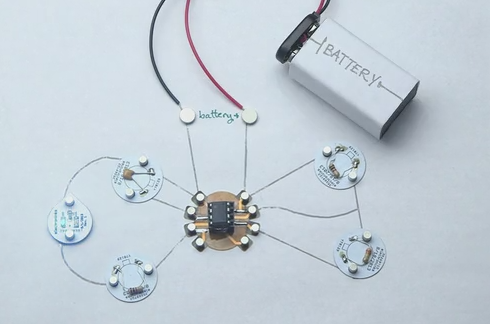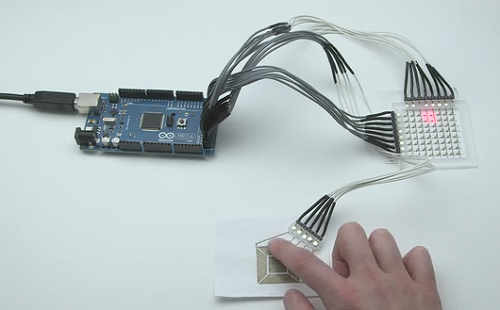Every electronic engineer, electronics hobbyist, and DIYer, ought to have at least one Circuit Scribe in their tool belt. The pen, a product of Eletroniks Incorporated, writes in conductive silver ink to make circuit creation as easy as doodling – literally. There’s no smudging, no smell, no glopping, and best of all, no waiting for the ink to dry. As soon as the ink hits the paper, it’s ready to conduct; this makes it immensely useful whenever you need to quickly prototype, test or fix a circuit. Schematic sketches immediately become working proto-types.

STEM education
In addition, the pen is an excellent way to cultivate an interest in electronics for the younger generation, by demonstrating working circuits using a fun and accessible hands-on approach. All the novice needs to set up a working circuit is a coin, a battery, a paperclip and an LED. The pen empowers educators to move lessons from the realm of theory and to the realm of practice. Kits are available for varying levels of expertise.

Electronic kits and components
Circuit Scribe’s Kickstarter supporters have the option of procuring custom, ready-to-use electronic components with their order. The most basic kit includes LED boards, slide switches, transistors, coin batteries, qV battery connectors, resistors, capacitors and the pin boards that accommodate them. A magnetic strip keenly located beneath the component enables you to snap them onto a page, so long as a conductive metal is placed beneath the page. No gluing or soldering necessary. Circuits can be hung on refrigerators if that’s your so called fancy.

Available components make circuit building as easy as plug and play
Alternatively, advanced users may prefer opting for the Maker kit, which includes all the previously listed components, in addition to a potentiometer, sound buzzer, photo sensors and a RFB LED.
A final step up above the Maker Kit is the Developer Kit, aimed specifically at build projects that interface with development boards like the Arduino, Raspberry Pi and Makey Makey. The kit includes two sets of components from the previous two tiers, along with an IO magnetic connection caord, USB micro B power adapter, 2 DPDT switches, a motor, and IO DIY solder boards. This lets you play around with changing the spinning speed and direction of the included motor using capacitive touch sensors that you’ve drawn yourself.

The included capacitive touch sensors add a whole new level of interactivity to the scale of projects you can undertake, allowing the creation of anything from a full hand-drawn keyboard, to a gamepad. In the video below, DIYer Jay Edry demonstrates a hand-drawn control he drew for his computer media system using Circuit Scribe and a mish-mash of components.
The ink
Each Circuit Scribe pen is hand filled with a water-based, non-toxic, silver ink. The ink lasts approximately 196-260 feet worth of lines before running dry. The lifetime of the trace lines is still being determined; however, trace lines drawn three years ago still function according to Eletroniks Incorporated.
The ink performs based on flexible substrates such as printer paper and photo paper and can support a maximum current of about 175mA on standard copy paper. Higher currents cause joule heating and a consequent drop in resistance due to sintering the particles (up to around 8x decrease in resistance if controlled). Photo paper is ideal for higher currents, supporting between 400 mA and 800mA.
Maximum voltage is dependent on the distance between the ground and the high voltage (HV) trace in your circuit. Anything above 36 V may result in a shock.
Visit Circuit Scribe's Kickstarter page to pick-up your own pens in time for this holiday season.
Advertisement
Learn more about Electronic Products Magazine





